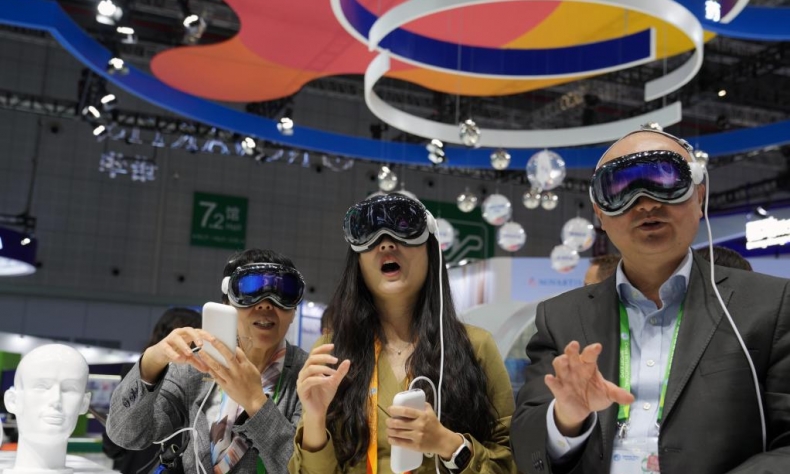Stimulating Development

China remains a crucial player in the global economy even though its growth has slowed compared to previous decades.
China’s top economic planner, the National Development and Reform Commission, recently unveiled a raft of measures to boost economic growth. At the same time, China’s central bank, top securities regulators and financial regulator also announced a raft of monetary stimuli, property market supports and capital market strengthening measures to be implemented in the near future to boost the country’s high-quality economic development. These policy measures include a reserve requirement ratio reduction for banks and a mortgage rate reduction for existing homes, as well as the introduction of new monetary programmes to boost the capital market.
Chinese officials have expressed confidence that China would reach its 5-percent annual economic growth target. This has surprised observers like me, given the bleak and distressed picture some pundits and commentators had painted of China’s future economic growth prospects.
Some commentators, especially in the West, argued that China’s economic growth had reached a dead end in recent months. After years of double-digit rates, the world’s second-biggest economy was likely to hit a plateau. Moreover, they insisted the real estate crisis caused by the debt problem of Chinese developer Evergrande Group marked the end of the country’s impressive economic growth.
But this is more wishful thinking than reality. The International Monetary Fund projects global growth to be around 3 to 4 percent, lower than the pre-pandemic average. However, China is likely to see a growth rate of up to 5 percent this year, which is lower than the double-digit rates of the past, but still robust compared to most developed economies. Slower growth and ongoing technological and green energy transitions are trends of the global economy in 2024.
China remains a crucial player in the global economy even though its growth has slowed compared to previous decades.
Global economic challenges
The factors cited by Western pundits as the reasons for China’s economic slowdown aren’t unique to China. Many countries have high inflation due to supply chain disruptions, labour market shortages, and energy price volatility. Global financial markets are also experiencing volatility due to high inflation and geopolitical uncertainties. Central banks, particularly the US Federal Reserve and the European Central Bank, maintain a cautious approach to monetary policy, balancing the need to contain inflation with maintaining economic growth. Stock markets are seeing mixed performances, with technology and green energy sectors growing, while traditional industries experiencing volatility.
China’s leadership in green energy and technological innovation, and its role as a manufacturing hub will continue to be essential drivers of global growth. Its economic model is shifting towards greater self-reliance and innovation as it navigates a more complex international economic landscape. After decades of rapid expansion, China has shifted its focus from high-speed growth to high-quality and sustainable growth, prioritising domestic consumption, technological innovation, and environmental sustainability.

These pundits are just painting China in a negative light again. Great power battles and rivalries might be the motive. The reality is that many in the West, particularly in the US and Europe, view China’s economic rise as a challenge to the current global order. Western countries are concerned about China’s growing technological prowess and its pursuit of development in high-value industries like semiconductors, AI, and telecommunications.
As a result, trade tensions, particularly between the US and China, have escalated over various issues. Western economies are increasingly pursuing policies of decoupling from China, especially in critical industries like semiconductors, rare earth minerals, and pharmaceuticals. Meanwhile, the Russia-Ukraine conflicts continue to create economic uncertainties, particularly in Europe, through disruptions in energy supplies and food markets.
Tensions are also caused by a growing international campaign to replace the US dollar as the global reserve currency, known as de-dollarisation, and the rise of the BRICS group. At the same time, the US decision to weaponise the dollar and confiscate Russia’s foreign reserves is forcing many countries to diversify their foreign currency reserves.
Rising protectionism and the reorganisation of supply chains are the themes in 2024. Countries are focusing more on reshoring or “friend-shoring” production, especially in strategic industries, to reduce dependence on “adversarial nations.” The global supply chain is becoming more fragmented as countries prioritise security and resilience over efficiency.
Despite facing sanctions and restrictions from the US on access to critical technologies like advanced chips, China is rapidly developing its domestic tech ecosystem. The growth of digital platforms such as Alibaba, Tencent, and Huawei underscores China’s influence in the global tech industry.
Badmouthing China will not solve the current economic recession in the US and most of its Western partners. As we speak, the economies of the US, Japan, the UK, and Germany are in doldrums after the West began trade battles with China and Russia in recent years.
Bright prospects
While Western economies struggle to stay afloat, China’s economy continues to hum. Unsurprisingly, global leaders whose countries previously turned their backs on China are flocking to China to rekindle relations. They include US Secretary of the Treasury Janet Yellen, French President Emmanuel Macron, German Chancellor Olaf Scholz, and Australian Prime Minister Anthony Albanese.
China’s Belt and Road Initiative continues to broaden its footprint in emerging markets across Asia, Africa, and Latin America, helping China to diversify its trade and investment partners. Despite tensions with the West, China remains deeply integrated into global trade networks.
A new edition of the China International Import Expo will be held in Shanghai in early November. This is another essential event that is likely to boost China’s international cooperation. Many African countries are expected to attend the expo to showcase their products and services to Chinese consumers.
In short, contrary to what the Western commentators and their media partners are saying, the China’s economy is doing far better compared to the US, the EU, and Japanese economies.
The author is Editor-in-Chief of African Times, Johannesburg, South Africa.
 Facebook
Facebook
 Twitter
Twitter
 Linkedin
Linkedin
 Google +
Google +










